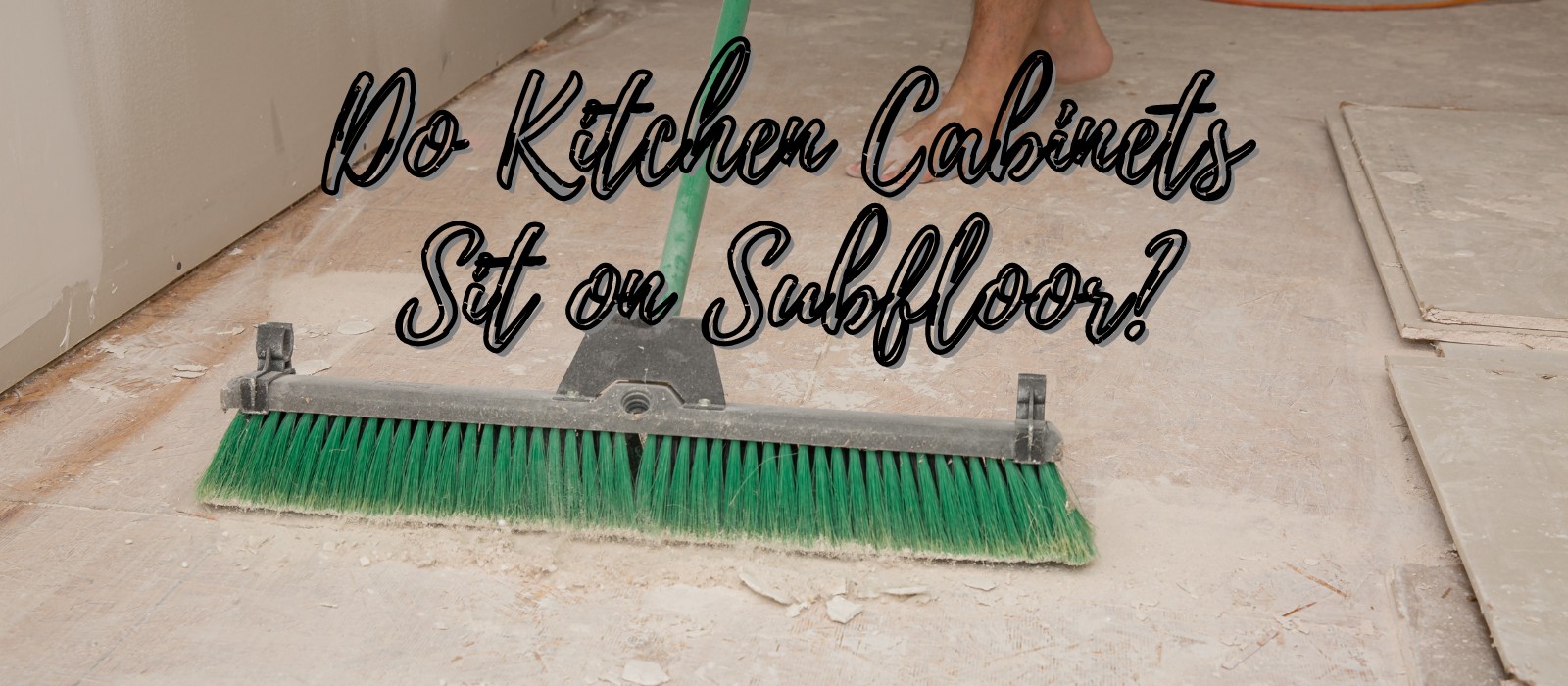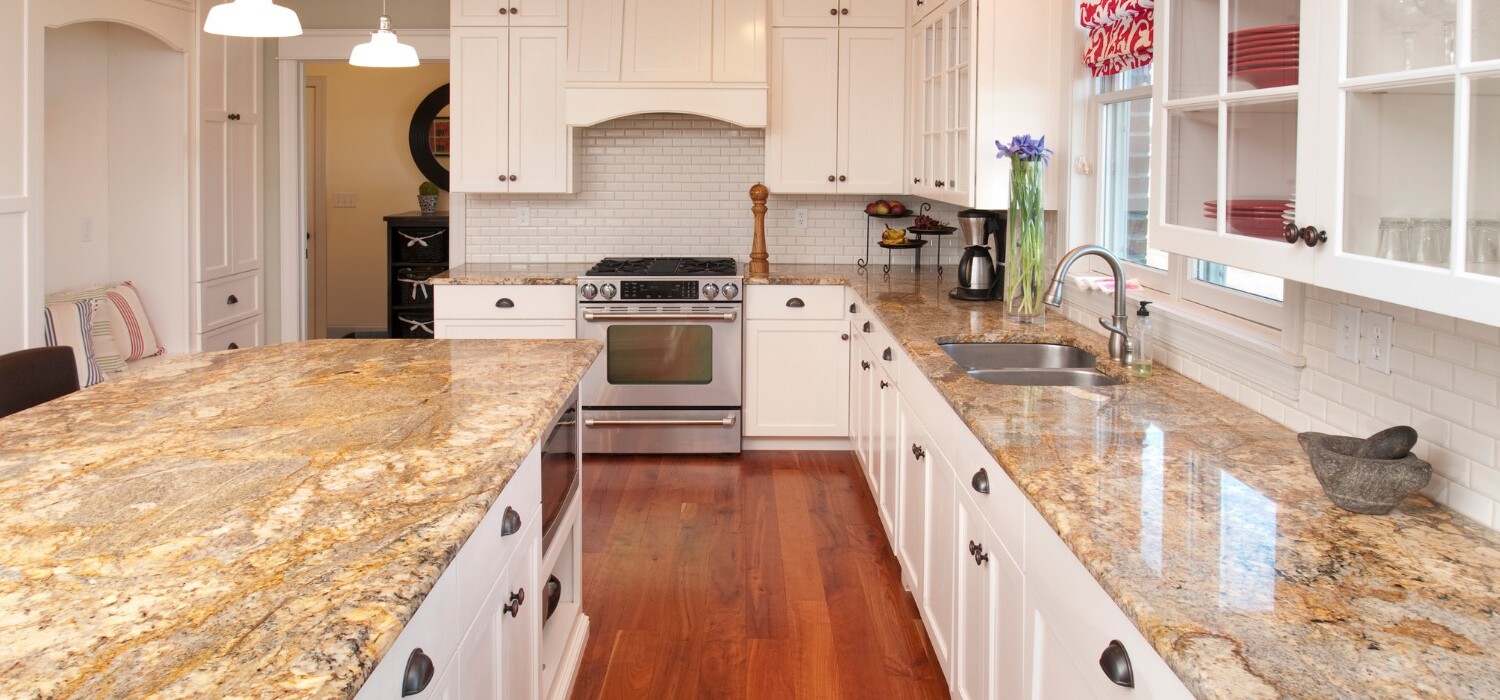Whether you are in the early stages of a kitchen remodel or just curious about your home design, you want to know if your kitchen cabinets sit on top of the subfloor, or how your kitchen floors interact with your kitchen cabinets. Well, we’re here to answer all your questions and provide you with the most up-to-date information, making you the most knowledgeable homeowner on the block.
For all the details on how your kitchen cabinets and kitchen floors work together, keep reading!
Do Kitchen Cabinets Sit on Subfloor?
Yes and no. It really depends on your preference, the type of cabinet, and more importantly, on the type of kitchen flooring you have and how it is installed.
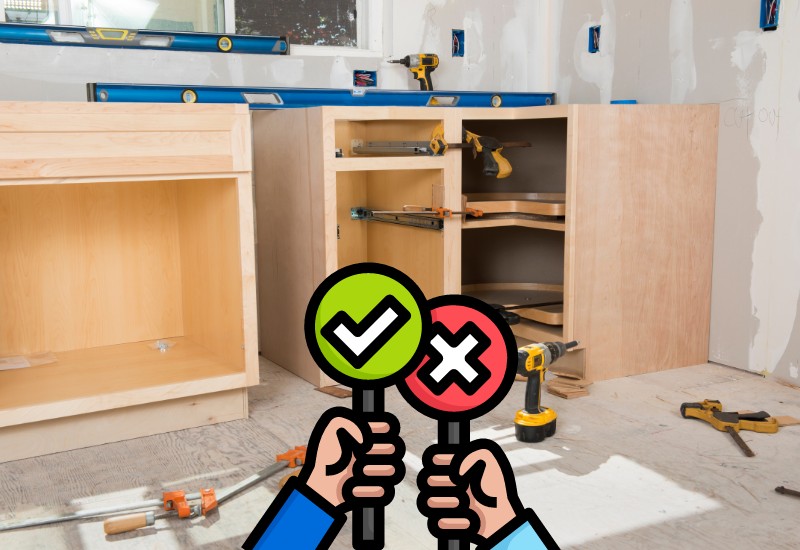
It isn’t necessary to have your kitchen cabinets sit on the subfloor, and it certainly isn’t the desired option among contractors.
Ideally, most installers would love to come in and lay out flooring for the entire stretch of the room, versus installing a new floor around cabinets which involves meticulous cuts and a carefully trained eye to make sure the finished product looks just right.
An added benefit to installing your flooring first and then your kitchen cabinets, is that it allows for the industry-standard height of 36 inches between your floor and kitchen countertops.
36 inches is the widely accepted height to allow for proper accessibility and comfort in the kitchen, and it can be difficult to achieve this height if your kitchen cabinets are sitting on top of the subfloor.
Kitchen cabinets that are too low can make your kitchen feel cramped or just look strange, and no one wants that.
Do Kitchen Cabinets Go on Top of Flooring?
Kitchen cabinets can go on top of the flooring, but this is usually only a proper method when the flooring type requires it.
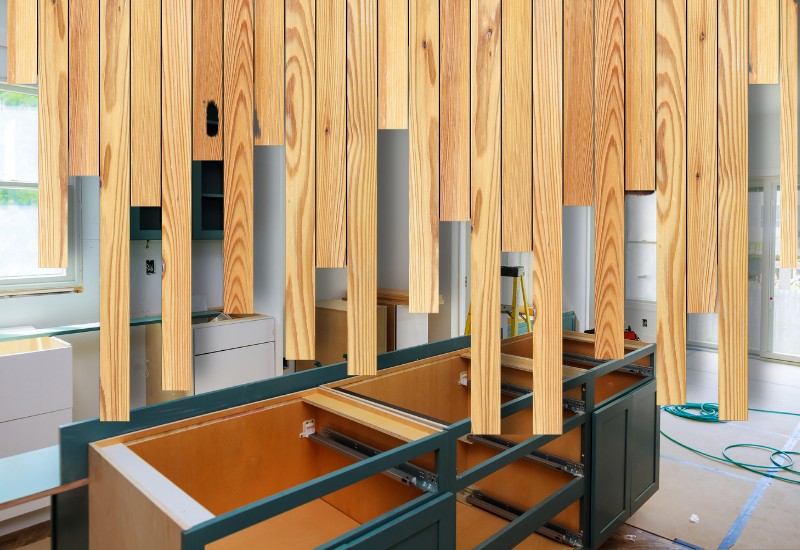
So what types of flooring are there?
Well, first you have floating floors which include materials like laminate, luxury vinyl plank, and engineered hardwood. These floors are designed to lay on top of the subfloor (or in some cases, over an existing floor) and “float” in place without any securing by glue or nails.
The other type of flooring is the more traditional route which involves gluing or nailing the flooring material to the subfloor, making it stationary. This includes solid hardwood, tile, and bamboo. Also, there are products of luxury vinyl planks (LVP) and engineered hardwood that does require securement. Be sure to check the manufacturer specifications to know what installation method is called for.
The reason a floor needs to float is to allow the material to expand and contract with changes in temperature and humidity. If a floating kitchen floor were glued or nailed down, it would be more susceptible to issues like gaps, buckling, cupping, and crowning.
This is exactly why you do not want to have your kitchen cabinets rest on floating floors, as the weight will impede the necessary movement for the floor to function properly.
With a stationary floor, the kitchen cabinets can be attached to the subfloor or in some cases, to the flooring material itself without hampering the functionality.
Are Kitchen Cabinets Attached to the Floor?
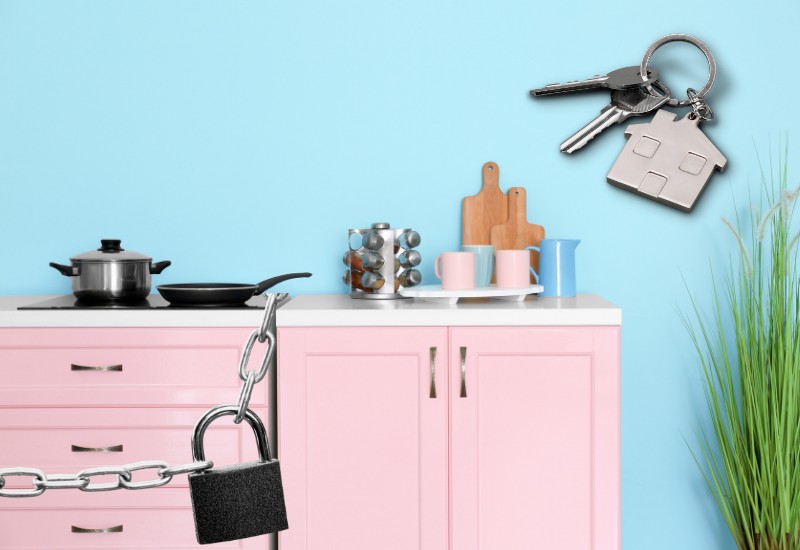
Sorry, but the answer here again is yes and no.
Traditional cabinets that lay against a supporting wall do not get attached to the floor. The only time kitchen cabinets are attached to the floor is when they are free-standing kitchen cabinets, like an island or a peninsula.
In this case, the kitchen cabinets will be sitting on the subfloor (or in some cases, on top of the flooring) and will need to be fastened down for stability.
It is important to note that not all kitchen cabinets can be fastened to the floor, so if you are unsure, always consult a professional to avoid any damage.
Why Don’t You Put Flooring Under Kitchen Cabinets?
The main reason you don’t put flooring under kitchen cabinets is to allow the kitchen cabinets to “float” on the subfloor.
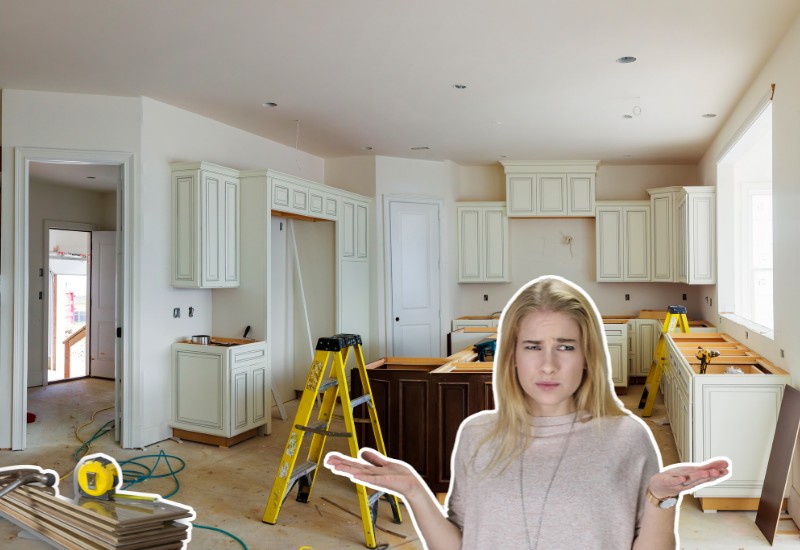
As we mentioned before, kitchen floors need to be able to expand and contract with changes in temperature and humidity, so if they were glued or nailed down, it would impede this necessary movement and cause damage to the cabinets.
However, if the kitchen flooring is not a floating floor, then there is absolutely no reason you can’t put flooring under your kitchen cabinets. At that point, it is entirely your preference.
Do You Put Flooring Under Kitchen Island?
The kitchen island is a free-standing kitchen cabinet, so it does need to be fastened to the floor.
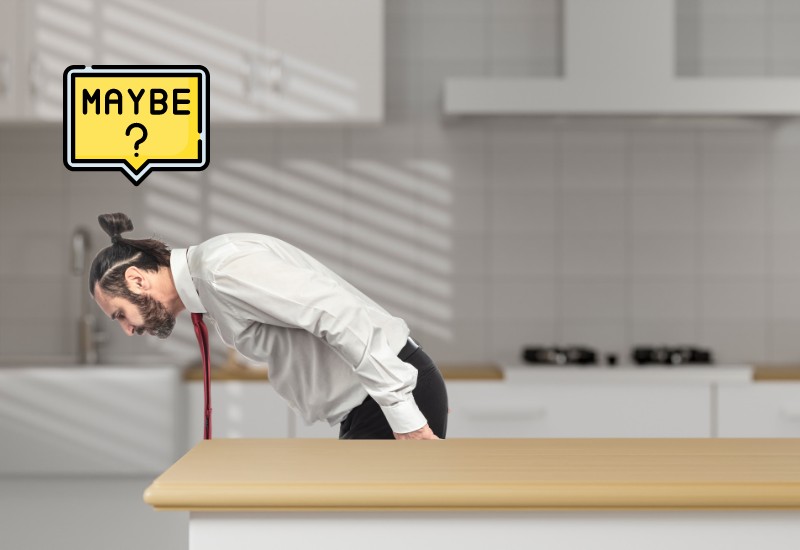
This is for stability purposes, as the kitchen island will likely have heavier items stored on it, like pots and pans.
In this case, you can either glue or nail the kitchen island down, depending on what the manufacturer specifications call for.
While you could do this before the floor is installed and fasten the island directly to the subfloor, this would most likely cause the height of the countertop to be lower than all the other cabinets.
Do You Put Flooring Under Appliances?

This is another situation where it depends on the type of flooring. But not in the same way as with cabinets. In fact, it’s almost the opposite method to be taken.
When it comes to a floating floor, you can and usually do install the floor under appliances. This is because the size and weight of the appliance are not as impactful as a cabinet.
For instance, if a refrigerator is heavy you would think that installing a floating floor underneath would not be advised, but the actual square footage the fridge impacts is minimal. When comparing a cabinet that could possibly stretch 3/4 the length of the wall, it is easy to see how one fridge wouldn’t be an issue, but a whole line of cabinets would.
As for appliances and a stationary floor, the issue that arises is the thickness of the flooring material as it relates to the dishwasher, and dishwasher only.
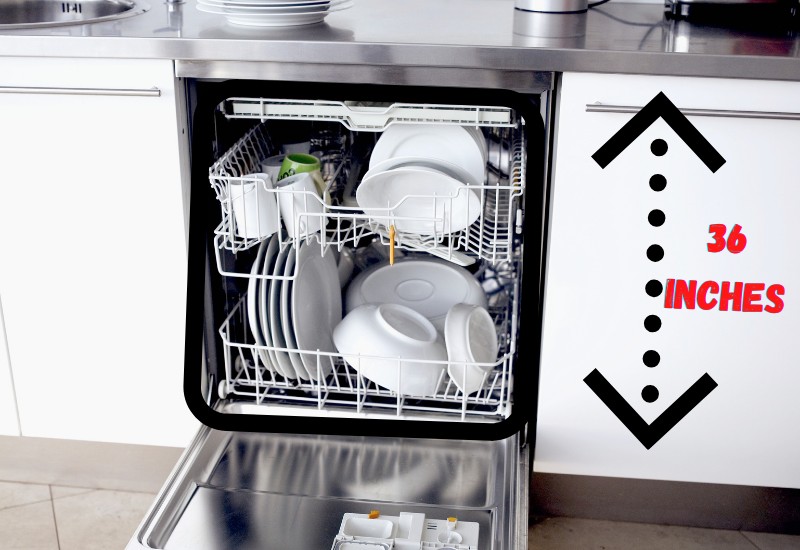
This is because the dishwasher has a countertop sitting over it in most cases. If installing a solid hardwood floor that is 3/4 of an inch thick (plus the width of the underlayment), it will most likely raise your dishwasher to a height that does not allow the countertop to fit snugly over it.
The same can be said for a tile floor that is laid with mortar, which can range from a quarter of an inch to three-quarters of an inch thick.
So, the best course of action would be to install the flooring material around the dishwasher but not under it.
Conclusion
Kitchen cabinets are not always attached to the kitchen floor and most of the time, do not sit directly on the subfloor. This ensures that needed movement is given to the flooring material and the standard height of floor to counters is reached for accepted accessibility.
If you have any questions about kitchen cabinets or kitchen flooring in general, please feel free to reach out to us and we would be happy to help! Thanks for reading!

